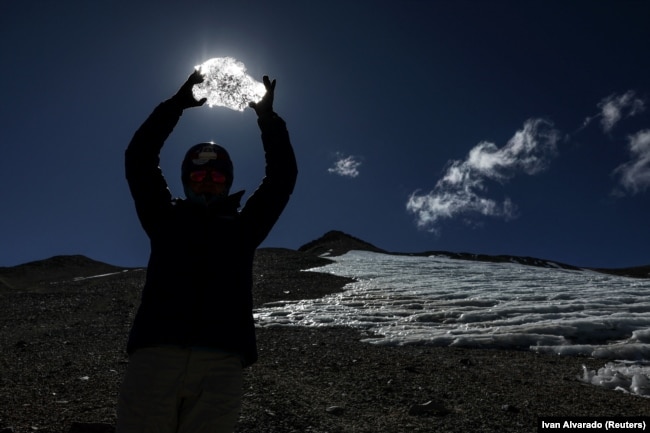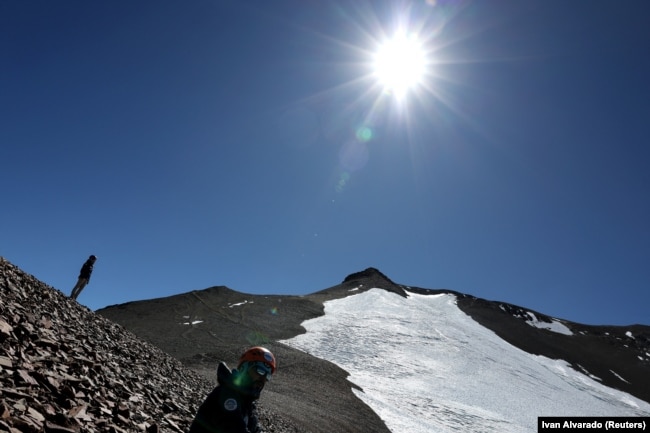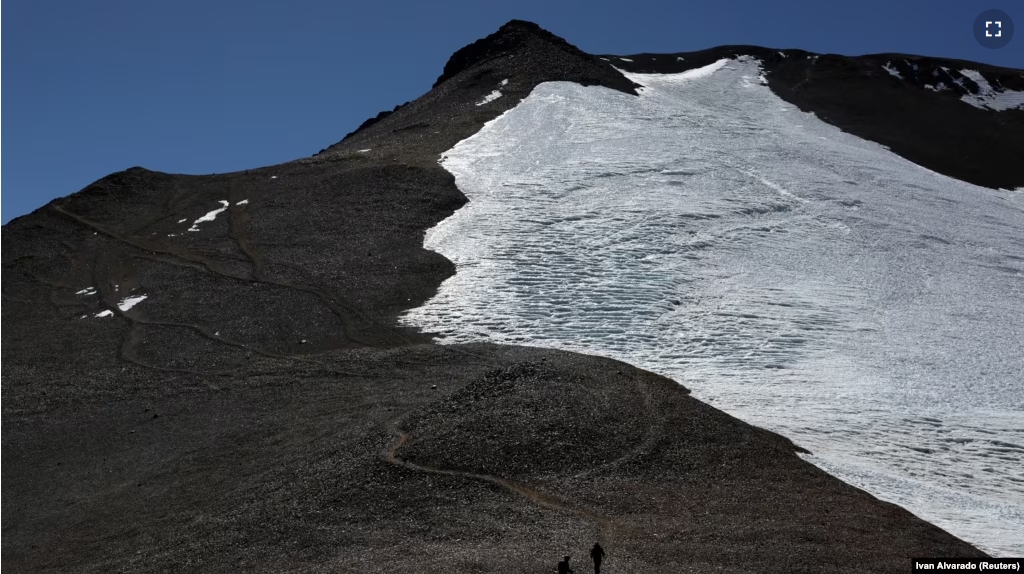A new study finds that the glaciers across the Andes in South America are shrinking at a speed not seen before in the history of human civilization.
This discovery surprised scientists. At first, they only planned to study the current conditions of glaciers and how they changed through history.
“We thought this result was decades away,” said Andrew Gorin. As lead writer of the study, he first thought the results were an accident. But later he and his team confirmed the results with more samples.
Gorin said that the shrinking of glaciers is happening even faster than experts had thought.
He and a team of scientists carbon-dated bedrock that had been recently exposed by shrinking glaciers. They measured beryllium-10 and carbon-14 nuclide levels and found that concentrations were nearly zero.

He explained that if the rock can “see the sky” it collects these nuclides. He added that the decay rate of these nuclides shows that the rock had not been exposed during the Holocene Era. This era dates back 11,700 years but could go back even further.
“I would bet my whole life savings that in fact, these glaciers are smaller than they’ve been since the last interglacial period,” Gorin said. The last interglacial period ended about 115,000 years ago.
The study collected data at four glaciers across the Andes. These glaciers make up 99 percent of the world’s tropical glaciers. They are more affected by changing weather because they are regularly at or near freezing point.

“We think this is the canary in the coal mine, that this is going to happen everywhere before long and maybe sooner than we thought,” Gorin said. (Canary in the coal mine is an expression that warns of danger. Coal miners would use a canary to tell if the oxygen levels in a coal mine were dangerous.)
Researchers published the new study in the journal Science on August 1.
I’m Anna Matteo.
Alexander Villegas reported this story for Reuters with additional reporting by Jake Spring. Anna Matteo adapted it for VOA Learning English.
_____________________________________________
Words in This Story
decade – n. a period of 10 years
sample – n. a part or thing that shows the quality of the whole or group
expose – v. to submit or make accessible to a particular action or influence
level – n. an amount of something especially in comparison with typical or expected amounts
concentration – n. the amount of an ingredient or part in relation to that of others
decay – v. to decline in health, strength, or vigor
canary in the coal mine – an expression that warns of danger. Coal miners would use a canary to tell if the oxygen levels in a coal mine were dangerous.
